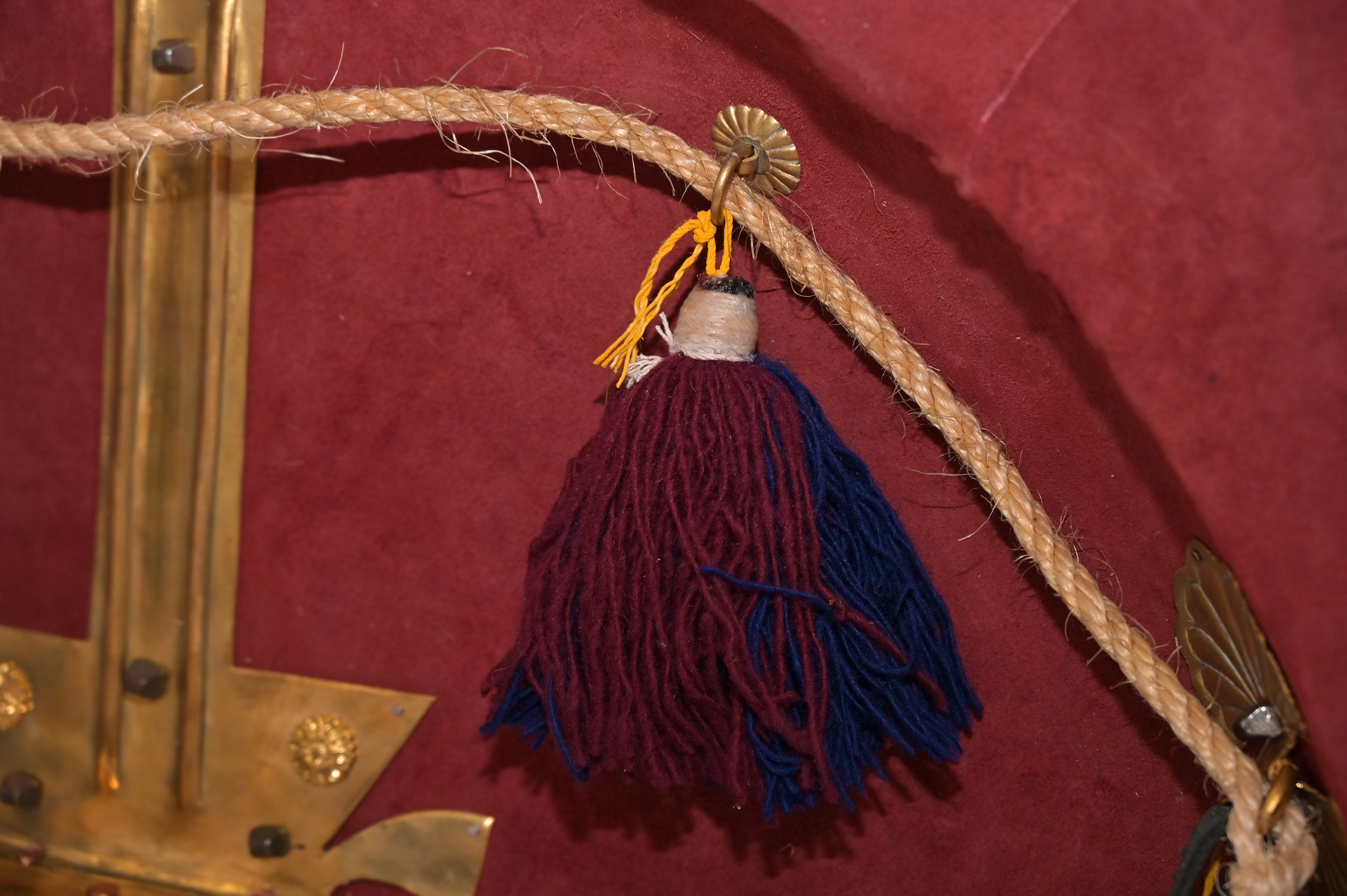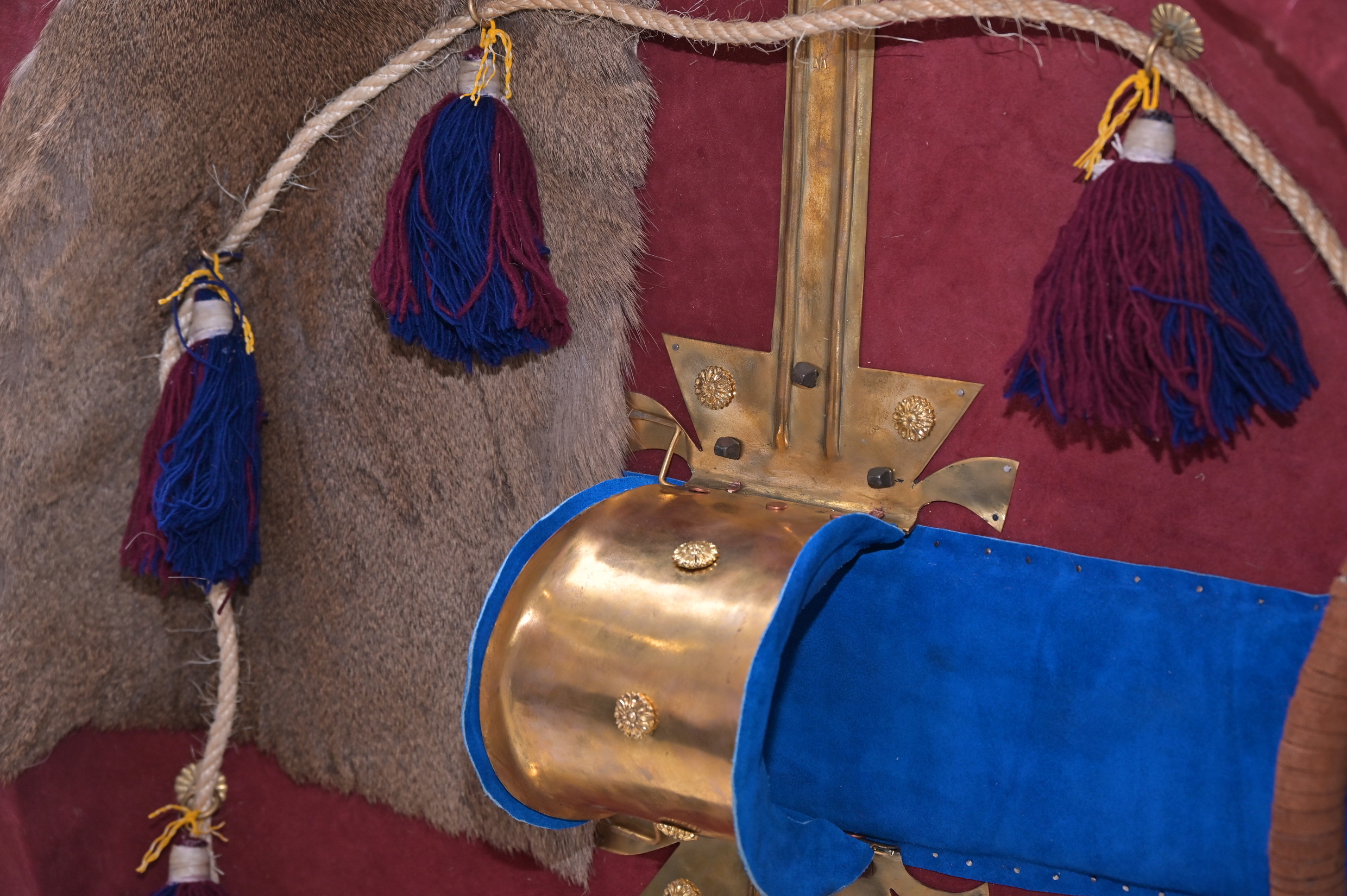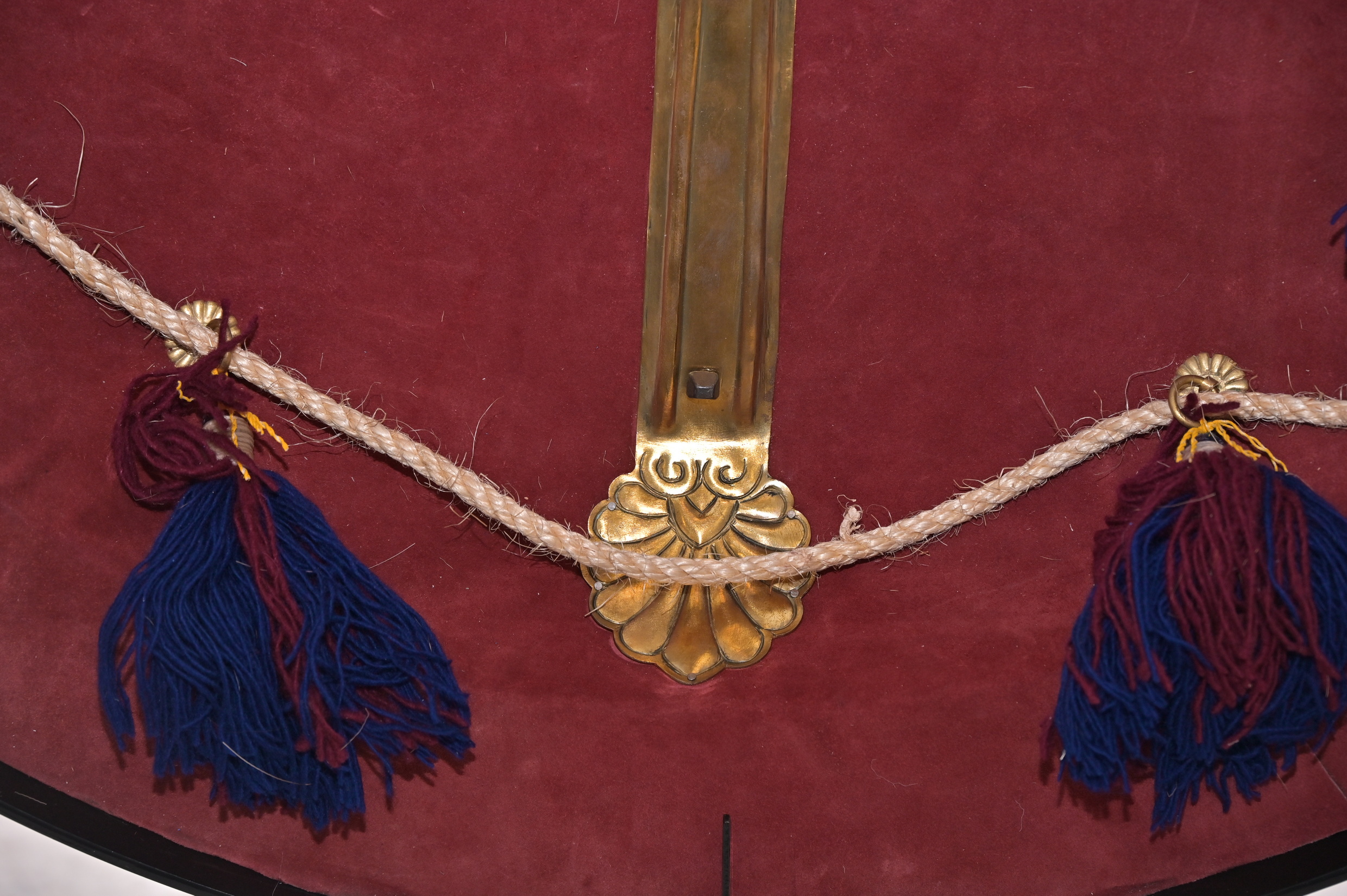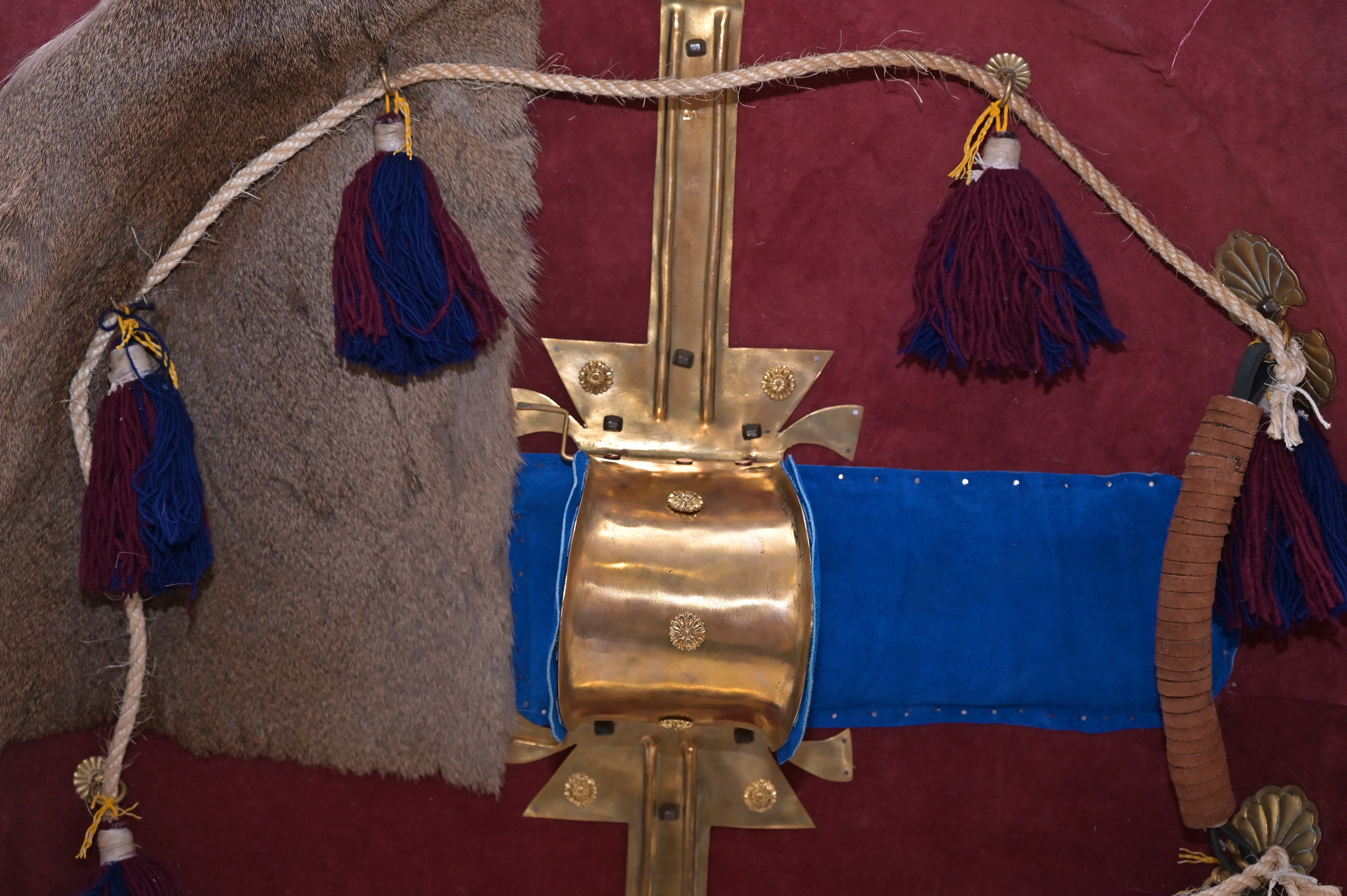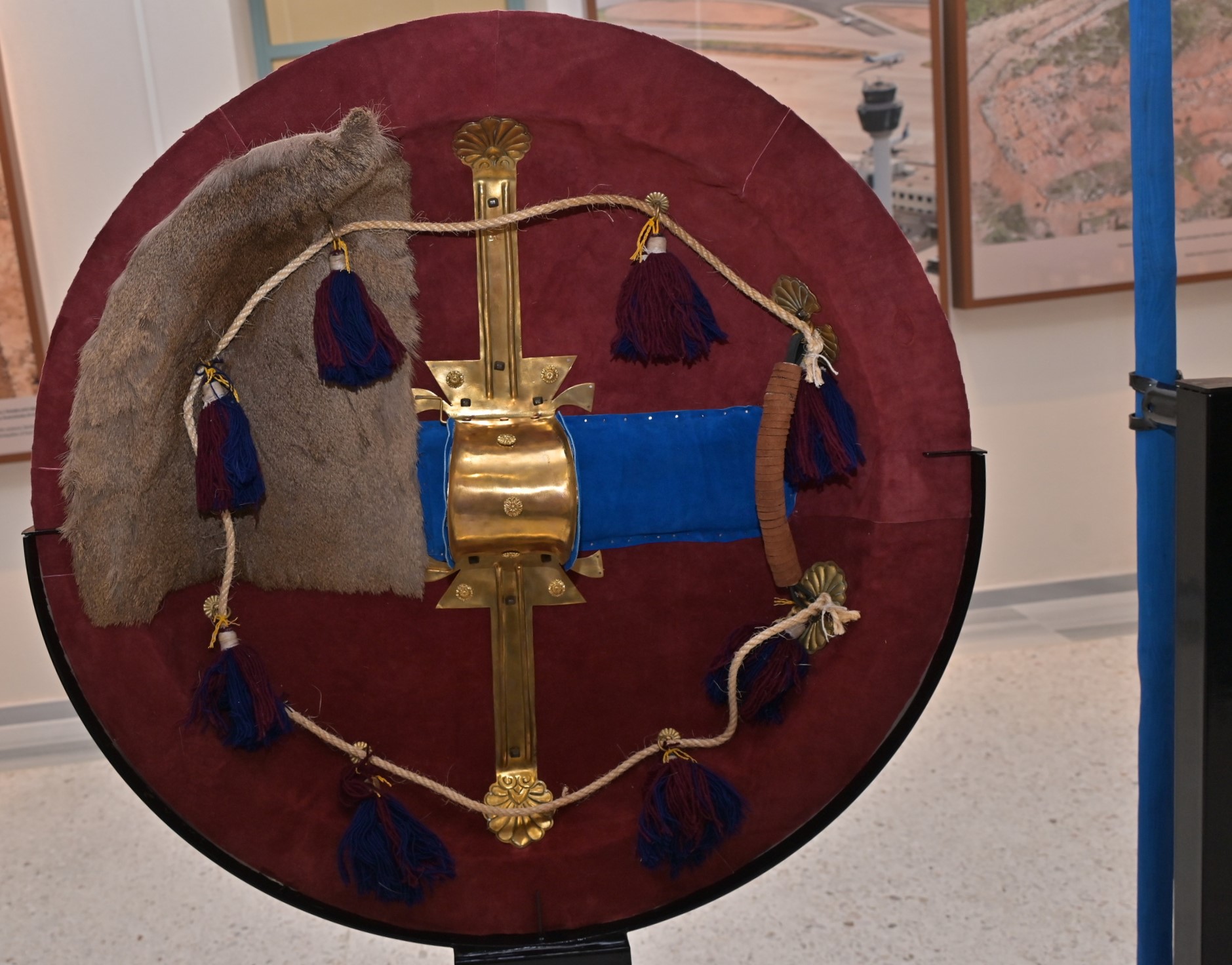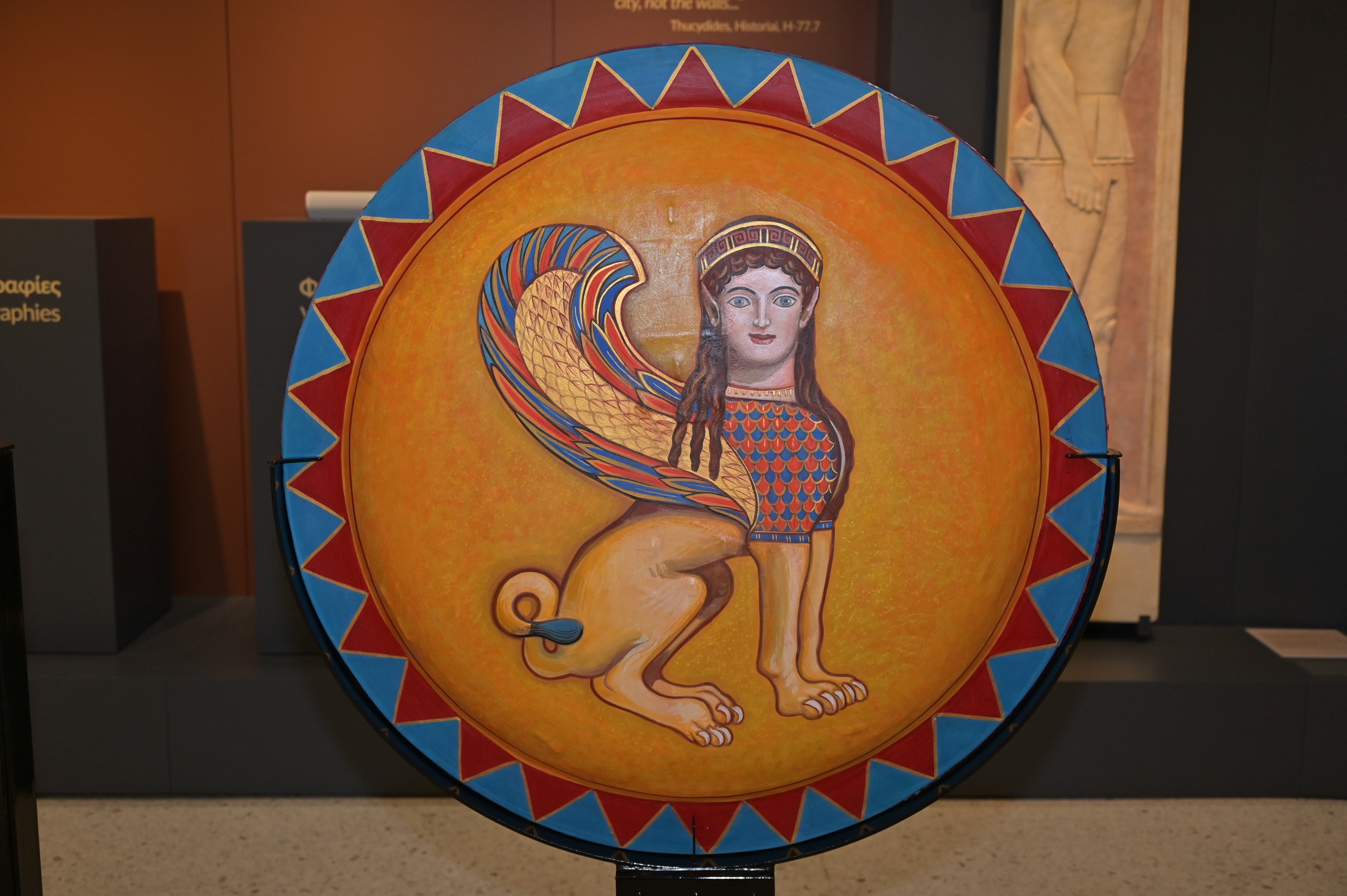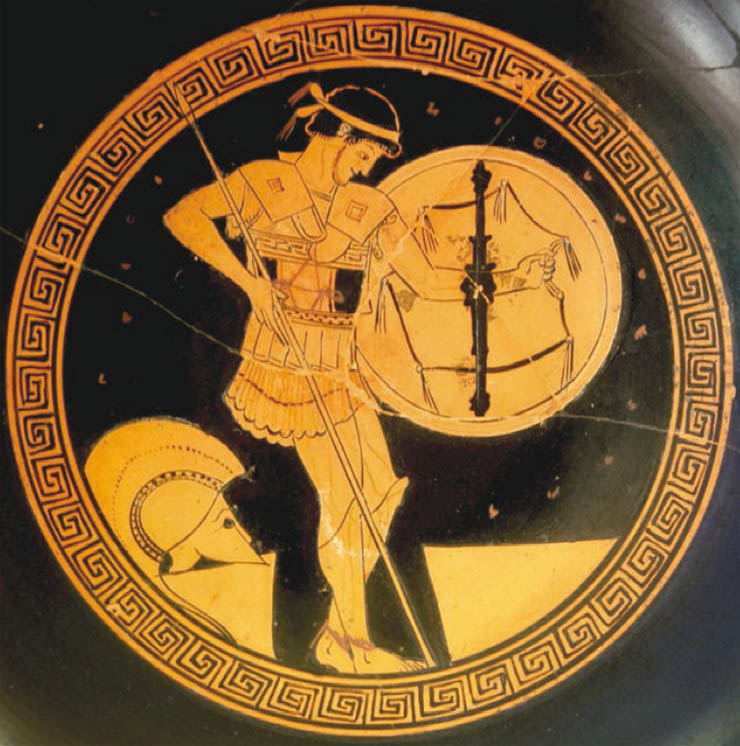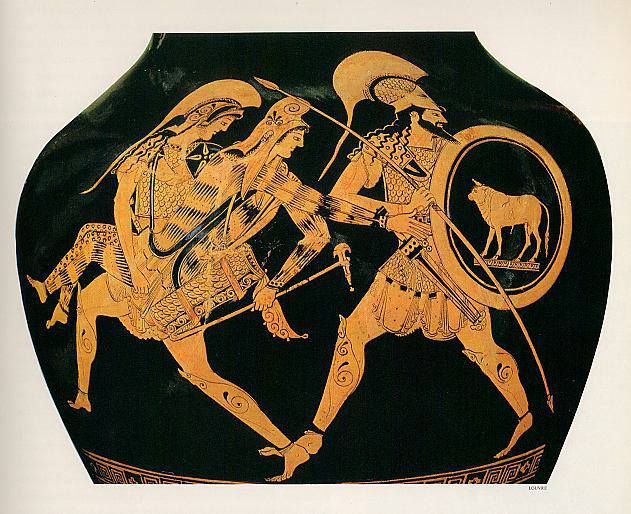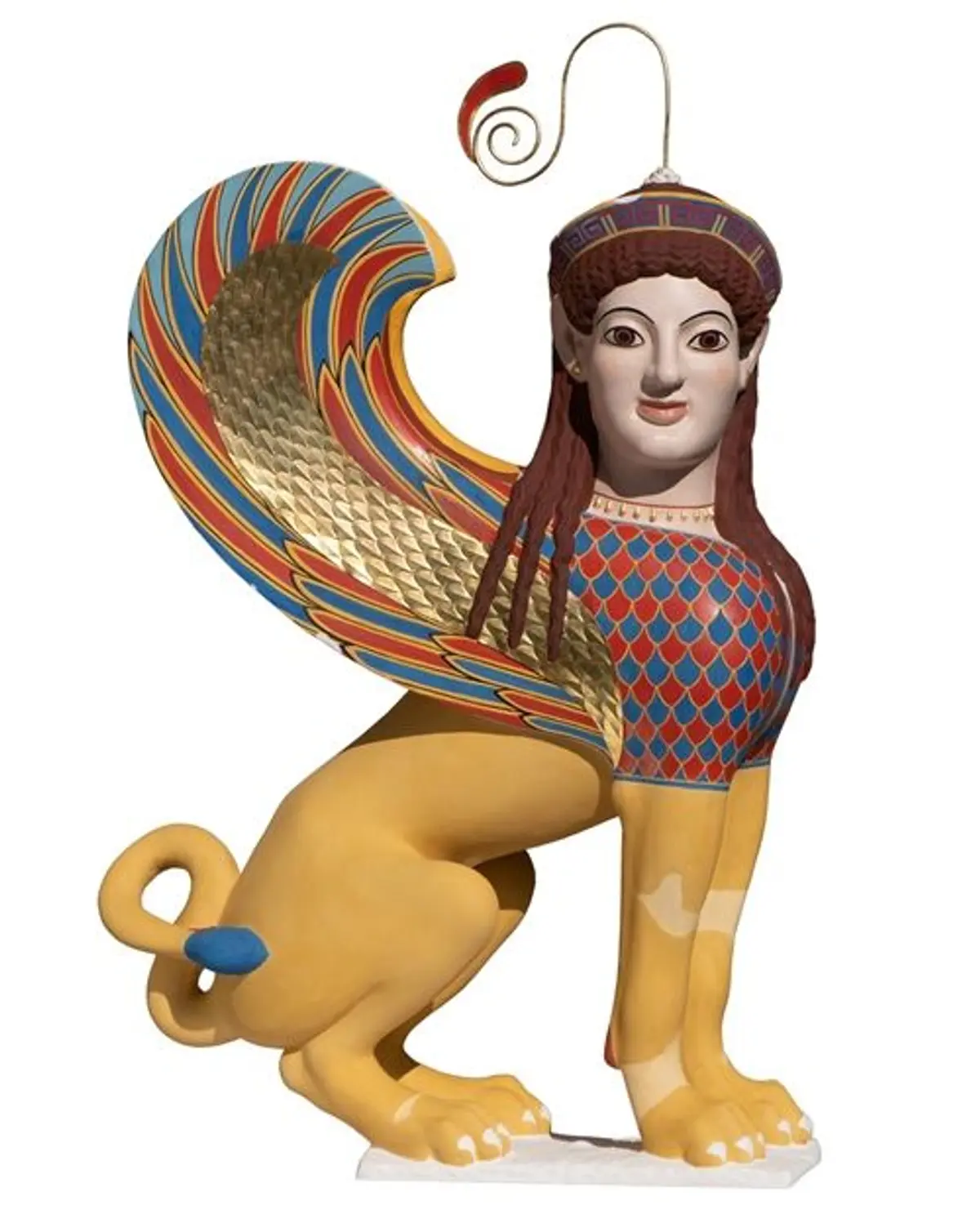Ancient Greek Armors
Sphinx’s Hoplite Shield
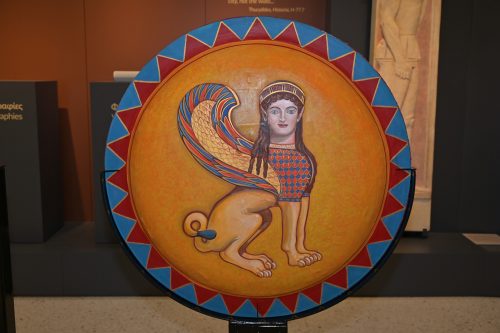
The Hoplite shield (“Hoplon”) with a round cross-section appears in the middle of the 8th century BC as result of the adoption of the “Phalanx” formation by the armies of the Greek city-states. It appears in numerous artistic depictions in Greek art (e.g black&red figure vases, sculptures) and even entire specimens are being displayed at Archaeological Museums. Undoubtedly is being consisted the biggest and the most recognizable part of hoplite defensive gears.The convex surface (bowl-like shape) and the rim around the perimeter became a diachronic structural elements during the Ancient Greek city state era
The core of the shield is wooden, lathe made, it’s average thickness is around 1cm, its diameter 90 cm,it’s weight 9 kg in total. The inner side of the shield is hollow on the most of its surface with a rim ( 7 cm width) to consist its outer circumference. The inner side has been covered with red leather and deer fur. It has six loops around the perimeter for the suspension rope and decorative colorful tassels for each ring.
From functional approach its effectiveness was unparalleled, it was becoming a physical continuation of the left arm of the hoplite due to sophisticated grip mechanism of “porpax” (πόρπαξ or λαβή, forearm grip) and “antilave” (αντιλαβή-grip). The anatomical porpax facilitate the left forearm, crafted from a sheet of bronze, it is detachable in order after it’s removal the shield cannot be used by someone other than its owner. This is achieved by a mechanism of hinges and safety pins.The handle rests on two elongated arms (“ohano”, οχανό in Greek) with decorative palm elements fixed on the wooden body by nails. The “antilave”, the secondary grip has been made of leather and facilitates the left palm of the hoplite. This advanced grip arrangement and the hollow formation of the shield, creates a sophisticated device that allows the complete control of it by the left hand of the hoplite.
Most commonly, the outer surface was painted with the “episemon” (επίσημον), an colorful emblem (as Medusa heads , mythical animals, geometric patterns etc) which symbolized the hoplite’s city, clan, personal preferences etc. In some cases the surface was covered with thin bronze sheet, plain or decorated(extra luxury version).The displayed shield bears a painted representation of an Attic sphinx from the Archaic period (530 BC) coming from a marble relief stele (Munsey Fund, 1936, 1938 (11.185d, x). The coloring of the Sphinx has been based on the corresponding display of the exhibition ” Coloured Gods – the polychrome of the ancient statues” by the German Archaeologist Vinzenz Brinkmann. The recreated painting decoration was created by the Greek hagiographer& painter Vasileios Stamou.
Description of red figure pottery depictions.
a)Αchilles.Details of the inner side of the shield. Red figure pottery (50-475 BC)
Royal Museum of Art and History in Brussels, Βέλγιο
- b) Theseus carrying off Antiope with Peirithoos. Detail from an Athenian red-figure clay vase, about 490 BC. Paris, Musée du Louvre G197. ©
Myson painter
